第26章 THE STATE AS A WORK OF ART(26)
the public income (over 300,000 gold florins) and expenditure the population of the city, here only roughly estimated, according to the consumption of bread, in 'bocche,' i.e.mouths, put at 50,000 and the population of the whole territory; the excess of 300 to 500 male children among the 5,800 to 8,000 annually baptized 18 the schoolchildren, of whom 8,000 to 10,000 learned reading, 1,000 to 1,200in six schools arithmetic; and besides these, 600 scholars who were taught Latin grammar and logic in four schools.Then follow the statistics of the churches and monasteries; of the hospitals, which held more than a thousand beds; of the wool trade, with most valuable details; of the mint, the provisioning of the city, the public officials, and so on.Incidentally we learn many curious facts; how, for instance, when the public funds ('monte') were first established, in the year 1353, the Franciscans spoke from the pulpit in favour of the measure, the Dominicans and Augustinians against it.The economic results of the black death were and could be observed and described nowhere else in all Europe as in this city.20 Only a Florentine could have left it on record how it was expected that the scanty population would have made everything cheap, and how instead of that labor and commodities doubled in price; how the common people at first would do no work at all, but simply give themselves up to enjoyment, how in the city itself servants and maids were not to be had except at extravagant wages; how the peasants would only hill the best lands, and left the rest uncultivated; and how the enormous legacies bequeathed to the poor at the time of the plague seemed afterwards useless, since the poor had either died or had ceased to be poor.Lastly, on the occasion of a great bequest, by which a childless philanthropist left six 'denarii'
to every beggar in the city, the attempt is made to give a comprehensive statistical account of Florentine mendicancy.
This statistical view of things was at a later time still more highly cultivated at Florence.The noteworthy point about it is that, as a rule, we can perceive its connection with the higher aspects of history, with art, and with culture in general.An inventory of the year 1422 mentions, within the compass of the same document, the seventy-two exchange offices which surrounded the 'Mercato Nuovo'; the amount of coined money in circulation (two million golden florins); the then new industry of gold spinning; the silk wares; Filippo Brunellesco, then busy in digging classical architecture from its grave; and Leonardo Aretino, secretary of the republic, at work at the revival of ancient literature and eloquence; lastly, it speaks of the general prosperity of the city, then free from political conflicts, and of the good fortune of Italy, which had rid itself of foreign mercenaries.The Venetian statistics quoted above which date from about the same year, certainly give evidence of larger property and profit and of a more extensive scene of action; Venice had long been mistress of the seas before Florence sent out its first galleys (1422) to Alexandria.But no reader can fail to recognize the higher spirit of the Florentine documents.These and similar lists recur at intervals of ten years, systematically arranged and tabulated, while elsewhere we find at best occasional notices.We can form an approximate estimate of the property and the business of the first Medici; they paid for charities, public buildings, and taxes from 1434 to 1471 no less than 663,755 gold florins, of which more than 400,000 fell on Cosimo alone, and Lorenzo Magnifico was delighted that the money had been so well spent.In 1478 we have again a most important and in its way complete view of the commerce and trades of this city, some of which may be wholly or partly reckoned among the fine arts such as those which had to do with damasks and gold or silver embroidery, with woodcarving and 'intarsia,' with the sculpture of arabesques in marble and sandstone, with portraits in wax, and with jewelry and work in gold.The inborn talent of the Florentines for the systematization of outward life is shown by their books on agriculture, business, and domestic economy, which are markedly superior to those of other European people in the fifteenth century.It has been rightly decided to publish selections of these works, although no little study will be needed to extract clear and definite results from them.At all events, we have no difficulty in recognizing the city, where dying parents begged the government in their wills to fine their sons 1,000 florins if they declined to practice a regular profession.
For the first half of the sixteenth century probably no State in the world possesses a document like the magnificent description of Florence by Varchi.In descriptive statistics, as in so many things besides, yet another model is left to us, before the freedom a nd greatness of the city sank into the grave.